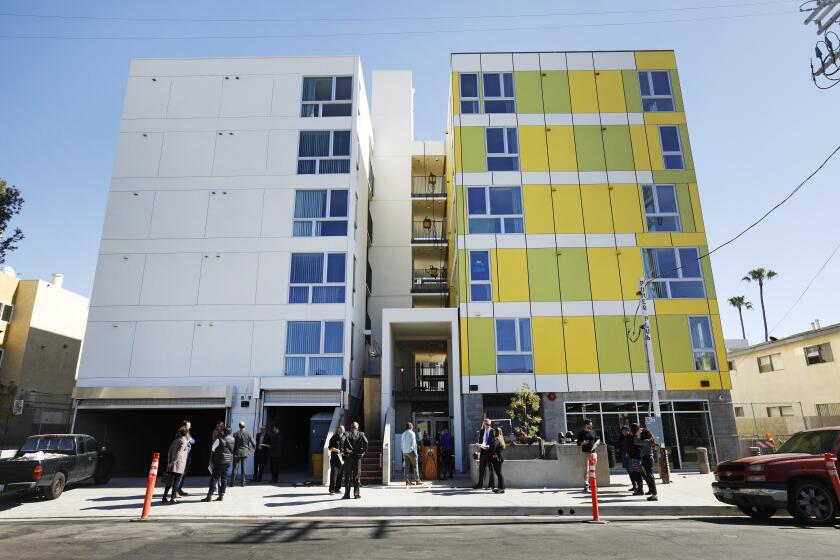Editorial: County officials should move child-protection reform forward
Mobilizing and coordinating Los Angeles County’s resources to protect children from abuse and neglect shouldn’t be so hard. But nine months have passed since the Blue Ribbon Commission on Child Protection filed its final report, and more than six since a follow-up team set about implementing recommendations and county officials began searching for someone to lead a new office to rethink and reorder services for endangered children. It’s time for the Board of Supervisors to get the process moving again.
The best place to start may be to recall with grief and sorrow the May 2013 beating death of Gabriel Fernandez, the 8-year-old Palmdale boy who, according to documents filed in court in the ongoing capital murder cases against his abusers, had suffered months of unconscionable abuse — beatings with bats, clubs and belts, BB gun shots to the body, gagging with socks, confinement in a locked cabinet.
When the child’s death made the news, it was met with public outrage at Gabriel’s mother, Pearl Fernandez, and her boyfriend, Isauro Aguirre, but also at the county’s Department of Children and Family Services. Social workers had been notified by teachers and others about evidence of abuse, and they had visited the home and examined Gabriel, but they repeatedly opted to leave him in his mother’s care. How could they have made so many wrong decisions?
Not every death can be prevented. In a county the size of Los Angeles, with 10 million people living across more than 4,000 square miles, there will be some measure of child abuse and neglect, and some of it will certainly be fatal despite the best efforts of social workers and government officials.
But with laws on reporting child abuse on the books and with a workforce of trained child social workers and emergency responders on duty, and with signs of abuse and neglect being missed or ignored, it’s hard to believe that authorities here can’t do better.
Some of the blue-ribbon commission’s findings and recommendations were straightforward. Abuse and neglect, for example, can be predicted with a remarkable degree of accuracy based on problems noted even before the child’s birth, including substance abuse and mental illness among the parents. So risk might be identified and mistreatment prevented by earlier intervention. Other services could be brought to bear by better protocols for coordination among DCFS, law enforcement, the schools and numerous county departments. The puzzle pieces were all on the table, but not put together.
Some findings were more oblique. The county’s poor job of coordinating departments and services may be a direct result of its form of government — five independent supervisors moving five ways and giving five different messages and sets of instructions to bureaucrats and department directors. Those mixed signals, in turn, can create an atmosphere of uncertainty and of fear of retaliation and retribution among social workers trying to keep up with the latest policy directive. Too often the effect is to discourage them from acting in response to signs of abuse and neglect. Bureaucracy can stifle courage.
But bureaucracy can be tamed. Not long after the commission submitted its report, Dist. Atty. Jackie Lacey took upon herself the responsibility in another arena. She launched an effort to determine how to divert mentally ill people accused of petty crimes from jail so that they could receive proper treatment and avoid the cycle of recidivism. County departments jumped on board with enthusiasm, as did the supervisors, who appeared relieved that someone — in this case a single elected official with executive power, not one of five board members — had stepped up to take charge.
Historically, there has been no such person to take charge of child protection. In considering applicants to lead the new office to coordinate services, the supervisors began referring to the child welfare “czar” — perhaps in the hope that such a person may, like Lacey, be able to transcend the organization chart.
The so-called czar would have power to move money and personnel among county departments to advance the interests of child protection. But unlike the independently elected Lacey, he or she will report to the Board of Supervisors, as did the chief executive (that position also is currently vacant), and be subject to all the board’s vicissitudes. If the CEO can’t move around money and personnel to protect children from mistreatment, could the czar do any better?
In response to a social worker strike, rather than the blue-ribbon commission report or the urging of the CEO, the board last year allocated funding for additional social workers, which should translate into more manageable caseloads. DCFS adopted a stronger training program. These are positive steps. But the county also needs someone to focus the attention of numerous government agencies on child protection without running afoul of the board.
In the end, if the supervisors are to protect children from abuse and neglect, they must also grapple with the more prosaic issue of how to successfully run a bureaucracy.
Attempts at plea bargains with Gabriel Fernandez’s mother and her boyfriend have so far failed, and the two defendants could very well go to trial this year. The supervisors would be wise to remember the young victim’s plight now, and ensure that the reform efforts are well underway when the news stories once again focus on the horrors that the young boy endured and the county’s failure to protect him.
Follow the Opinion section on Twitter @latimesopinion
More to Read
A cure for the common opinion
Get thought-provoking perspectives with our weekly newsletter.
You may occasionally receive promotional content from the Los Angeles Times.










